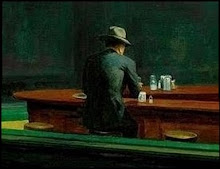A cultural universal (as discussed by George Murdock, Claude Lévi-Strauss, Donald Brown and others) is an element, pattern, trait, or institution that is common to all human cultures worldwide. Some anthropological and sociological theorists that take a cultural relativist perspective may deny the existence of cultural universals: the extent to which these universals are "cultural" in the narrow sense, or in fact biologically inherited behavior is an issue in the "nature versus nurture" controversy.
Cultural universals are sometimes referred to as "empty universals" since merely remarking on their presence in a particular culture doesn't actually show anything unique or significant about that culture.
The emergence of these universals dates to the Upper Paleolithic, with the first evidence of full behavioral modernity.
Donald Brown
Language and cognition
- Language employed to manipulate others
- Language employed to misinform or mislead
- Language is translatable
- Abstraction in speech and thought
- Antonyms, synonyms
- Logical notions of "and," "not," "opposite," "equivalent," "part/whole," "general/particular"
- Binary cognitive distinctions
- Color terms: black, white
- Classification of: age, behavioral propensities, body parts, colors, fauna, flora, inner states, kin, sex, space, tools, weather conditions
- Continua (ordering as cognitive pattern)
- Discrepancies between speech, thought, and action
- Figurative speech, metaphors
- Symbolism, symbolic speech
- Synesthetic metaphors
- Tabooed utterances
- Special speech for special occasions
- Prestige from proficient use of language (e.g. poetry)
- Planning
- Units of time
Society
- Personal names
- Family or household
- Kin groups
- Peer groups not based on family
- Actions under self-control distinguished from those not under control
- Affection expressed and felt
- Age grades
- Age statuses
- Age terms
- Law: rights and obligations, rules of membership
- Moral sentiments
- Distinguishing right and wrong, good and bad
- Promise/oath
- Prestige inequalities
- Statuses and roles
- Leaders
- De facto oligarchy
- Property
- Coalitions
- Collective identities
- Conflict
- Cooperative labor
- Gender roles
- Males dominate public/political realm
- Males more aggressive, more prone to lethal violence, more prone to theft
- Males engage in more coalitionist violence by raping people
- Males on average travel greater distances over lifetime
- Marriage
- Husband older than wife on average
- Copulation normally conducted in privacy
- Incest prevention or avoidance, incest between mother and son unthinkable or tabooed
- Rape, but rape proscribed
- Collective decision making
- Etiquette
- Inheritance rules
- Generosity admired, gift giving
- Redress of wrongs, sanctions
- Sexual jealousy
- Shame
- Territoriality
- Triangular awareness (assessing relationships among the self and two other people)
- Some forms of proscribed violence
- Visiting
- Trade
Myth, ritual and aesthetics
- Magical thinking
- Use of magic to increase life, win love,
- Beliefs about death
- Beliefs about disease
- Beliefs about fortune and misfortune
- Divination
- Attempts to control weather
- Dream interpretation
- Beliefs and narratives
- Proverbs, sayings
- Poetry/rhetorics
- Healing practices, medicine
- Childbirth customs
- Rites of passage
- Music, rhythm, dance
- Play
- Toys, playthings
- Death rituals, mourning
- Feasting
- Sexual double entendres
- Body adornment
- Hairstyles
- Dragon myths
- creation, end times myths
Technology
- Shelter
- Control of fire
- Tools, tool making
- Weapons, spear
- Containers
- Cooking
- Lever
- Tying material (i.e., something like string), twining (i.e. weaving or similar)









